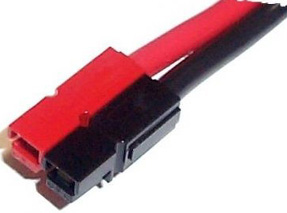
Next MARC Business Meeting
Due to the 4th being on Saturday this year, we will hold the next meeting on the W5FQ repeater, Saturday July 11th beginning at 10 A.M. Hope you can join us. HAPPY INDEPENDENCE DAY!

Huntsville Hamfest - CANCELED
The Huntsville Hamfest Board of Directors has been monitoring fallout from the COVID-19 pandemic, particularly large-gathering guidance and mandates from the CDC and the State of Alabama. As our world turned upside down in March we held out hope that we could anticipate a brighter picture in August for the Hamfest: including relaxation of social distancing guidelines and strict capacity limits on venues where hams could gather socially to see and buy new equipment, attend interesting forums, network with friends, and barter for used equipment.
Unfortunately this is not the case and with deep sadness the Board has voted to cancel Huntsville Hamfest 2020. We make this decision for the safety of our Visitors, Vendors, and Volunteers. We will be back and hope to see you back at “The World’s Friendliest Hamfest”™ on August 21 & 22, 2021.
73, Mark N4BCD – Chairman – Huntsville Hamfest

Weekly CW Training Broadcasts to Commence July 1
Attention all CW Operators: Effective July 1, 2020, Radio Relay International will be implementing a series of weekly training broadcasts designed to prepare CW operators for participation in traffic nets. Training broadcasts consisting of radiogram training messages will be transmitted on 20, 40 and 80 meters each Wednesday / Thursday. An outline of the program and the operating schedule may be found here: http://radio-relay.org/wp-content/uploads/2020/06/RRI-Weekly-Broadcast-Schedule-FA-2020-7-1.pdf
Please distribute to your local radio clubs, EmComm organizations, CW interest groups and section/local traffic nets.
73, Radio Relay International www.radio-relay.org
www.facebook.com/radiorelayinternational
info@radio-relay.org

Securing PowerPole connectors
By Dan Romanchik, KB6NU
In preparation for this year’s Field Day, I made a bunch of cables with PowerPole connectors to connect the solar panel, charge controller and batteries that I used. If you’re not familiar with PowerPoles, you might want to check out this YouTube video. They’re really great connectors, and have become the DC connector of choice for many hams.
When I make up PowerPole cables, I normally don’t bother trying to secure the two halves together, especially if you’re using some decently heavy gauge wire. They fit together pretty tightly, and don’t come apart easily. Even so, I think securing them together is a good idea. You can buy a little roll pin to insert between the red and black housings that is supposed to prevent them from coming apart, but many folks complain that the pin has a tendency to fall out. This not only defeats the purpose, but could also damage your equipment. |

PowerPoles have become
ubiquitous in
amateur radio stations.
|
Securing them is the right thing to do, though, and I recently came across some great suggestions on how to do this in the daily digest that I receive from the Elecraft-KX mailing list. Here are the best tips from the thread, Securing Anderson Power Poles:
- Rudy K8SWD: You can thermally bond the red and black housings with a soldering iron like you are making little welds on both sides. Permanent (mostly) but it works better than the roll pins. Just clean the tip really good before soldering!Dave K0CDA: [Anderson] also make connectors that are thermally bonded together in pairs. They do NOT come apart.Don W3FPR: I use a drop of Super Glue on the junction of the plastic pieces. Warning – that glue grabs quickly, so slide the 2 pieces only enough to start the assembly, then apply the drop of glue and quickly finish sliding them together. I have never had ones prepared like that come apart, and I don’t use roll pins. I will say one more thing – use only the genuine APPs. I have seen some knock offs that do not mate well.Greg KC9NRO: Take a hot soldering iron. Wipe the tip with sponge. Run the tip down both side of APP bonding the black and red sides together. Clean soldering iron tip and apply some solder to tip. That’s how I roll. Never comes apartMike AI4NS: PVC cement will soften the plastic enough to bond them together. You can also get plastic welding rods, such as Daindy Plastic Welding Rods. Chuck a rod in a Dremel and weld them together. I have made plastic boxes and panels using this method.Jack WD4E: Snip the cotton end off a Q-tip, cutting at an angle. Insert into hole made for roll pin, cut off excess, save remainder of Q-tip for next requirement.
- Troy K4JDA: 2.5mm screws work well, stay in, and are easily removable.
I posted these suggestions to my blog and got a few more great suggestions:
- Tom KB8UUZ: Fat tooth picks also work great. Jam it in, break it off.
- Bruce N0NHP: I use MEK (Methyl Ethyl Ketone) replacement to clean my circuit boards after soldering. A single drop of MEK on the junction between the two halves of the PowerPole shell will fuse them. It can be broken with a sharp tap but not accidentally. It will set and dry in seconds and should be applied after the shell pieces are put together.
I think these are all great suggestions. I think that I’m going to try the cotton swab method. While reading them, another thought occurred to me. I haven’t tried this yet, but I’m thinking a little drop of hot glue on the roll-pin hole might work, too.
=============================
Dan Romanchik, KB6NU, is the author of the KB6NU amateur radio blog (KB6NU.Com), the “No Nonsense” amateur radio license study guides (KB6NU.Com/study-guides/), and often appears on the ICQPodcast (icqpodcast.com). When he's not thinking up new ways to keep his PowerPoles together, he likes to teach ham radio classes and operate CW on the HF bands.

Quote of the Month


Have a BLESSED month!
 Next
Month
Next
Month
 Next
Month
Next
Month